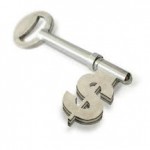Product Pricing
 Setting the right price, the stuff of nightmares right! It doesn’t have to be but feel free to lose sleep over it if it makes you feel better. Point one; there is no ‘right price’. You’ll find a range of pricing that can achieve different aims and we are going to break it all down into digestible chunks that should help you get to the best pricing to achieve your goals with no more than a double brandy for courage.
Setting the right price, the stuff of nightmares right! It doesn’t have to be but feel free to lose sleep over it if it makes you feel better. Point one; there is no ‘right price’. You’ll find a range of pricing that can achieve different aims and we are going to break it all down into digestible chunks that should help you get to the best pricing to achieve your goals with no more than a double brandy for courage.
The place to start is by calculating the minimum price at which you break-even, covering your costs and nothing else. That will give us the lower limit below which we would be losing money to sell product, while there is a strategy that might use that we are going to pretend it was never mentioned.
So, you have to do this bit. Add up the cost of materials, assembly, manpower, facilities, sales & marketing spend – everything that goes into getting your product / service to the customer. Don’t miss anything out including shared costs that cover other products and services as well. There will be some decisions to make, like some of your costs you might be happy to recoup over a number of years and others you will want to cover soonest, those are the trickier numbers you will need to decide on.
Then all you have to do is forecast how many you are going to sell. There is a white paper on forecasting that you might find useful. The rest is all downhill. Divide the total costs by the number of products and you get your minimum price per product.
Now you have to get Googling or walking the streets to find out what your competitors are selling their products for. You have to consider who your competitors are in the broadest possible terms to start with. What am I talking about? It depends what your product is, Think hard about the benefits your product brings to the customer. Then think equally hard about how the customers could achieve the same or similar results with a different product.
For example, instead of buying a photocopier I could just print the extra copies I need and when I need to copy something I didn’t originate I could take a picture on my digital camera and use that. Is that a lame example? Well it’s your business, think it through and do a better job. You will need to think through alternatives when you come to position your product, it will make the creation of your benefits list easier and more comprehensive.
OK. We now have some boundaries to work with and it is time for some theory.
price line
Minimum break-even
Is your break-even pricing and if you have done you work right it will be a slope on a graph showing your fixed costs and then the ones that vary according to the amount of product you sell.
Maximum Price
Is the top price anyone is charging for a competitive product as you have defined it. Penetration pricing.Is a small increase over break even. You make a small profit per unit sold in return for the prospect of selling higher volumes of product. It isn’t quite that simple of course but it is a starting point.
Skimming
Is setting the price as high as you think the market will pay in the hope of recouping your costs as quickly as possible.
Long term pricing – Sustaining
Could fall anywhere between penetration and skimming. If you have some flexibility in your product or service you may choose to have several offerings that adopt different price points. Computer manufacturers tend to have a range of prices at which they will be offering a product.
There will be the £2100 product sporting the best processor on the market, lots of RAM, a large hard disk etc. Then there will be the budget special at around £300. In between there will be a variety of other models. To charge the premium price they have to offer something special, something that may very well be next year’s mid or even low range model.
You may have an entry level product or service which can be added to, this is a good way of advertising a low price but rarely selling at that price as customers see what else they can have.
When you have narrowed your target price down to a range and you cannot decide where in that range to set your price; choose nearer the top of the range. Except in a few market areas customers do not buy on price alone. If you have a good ‘value’ story then you will have no problem selling at a higher price.
